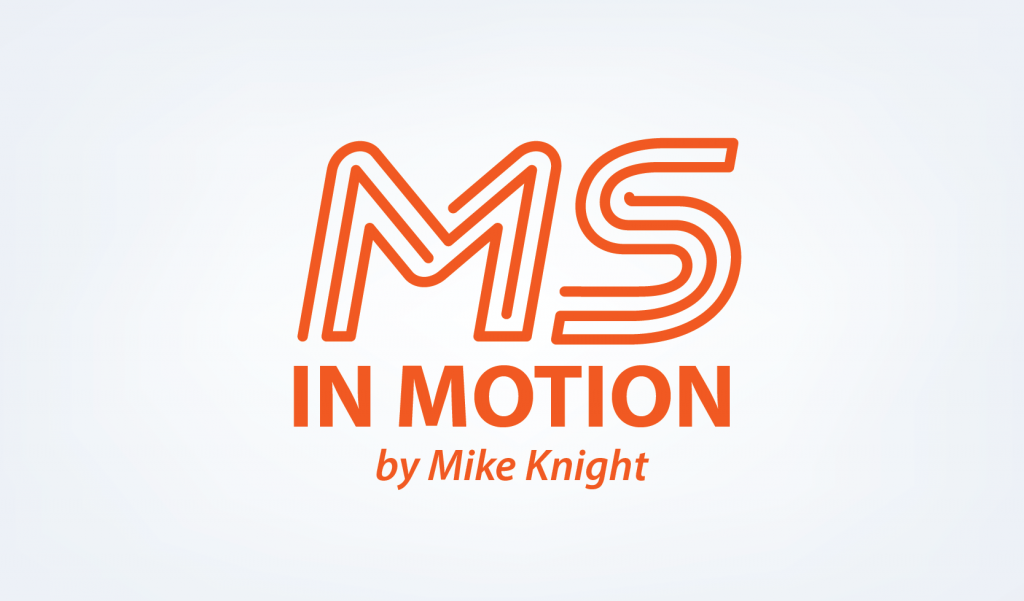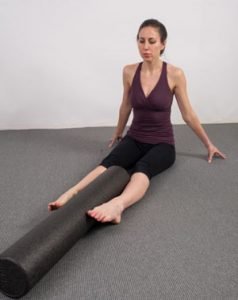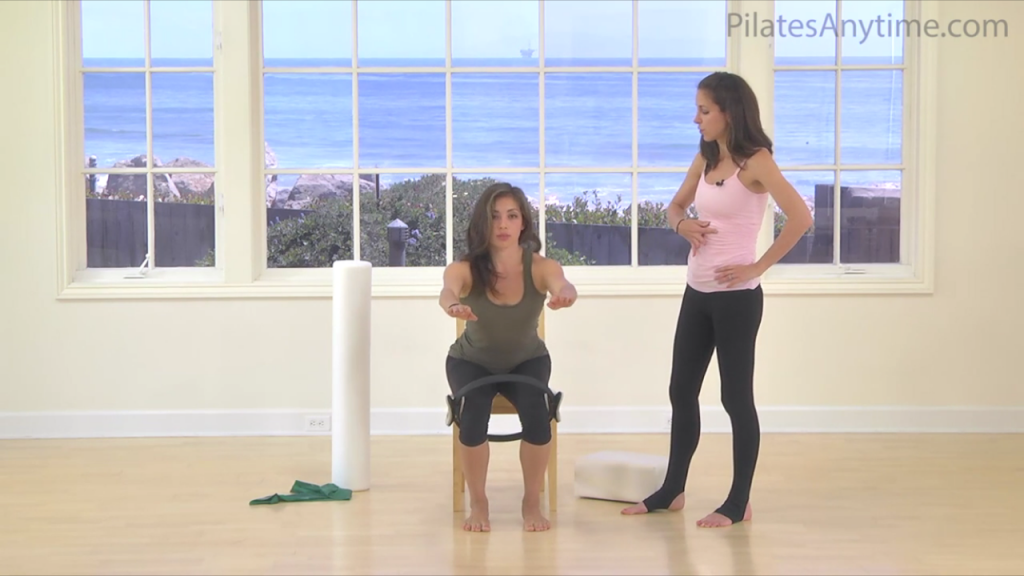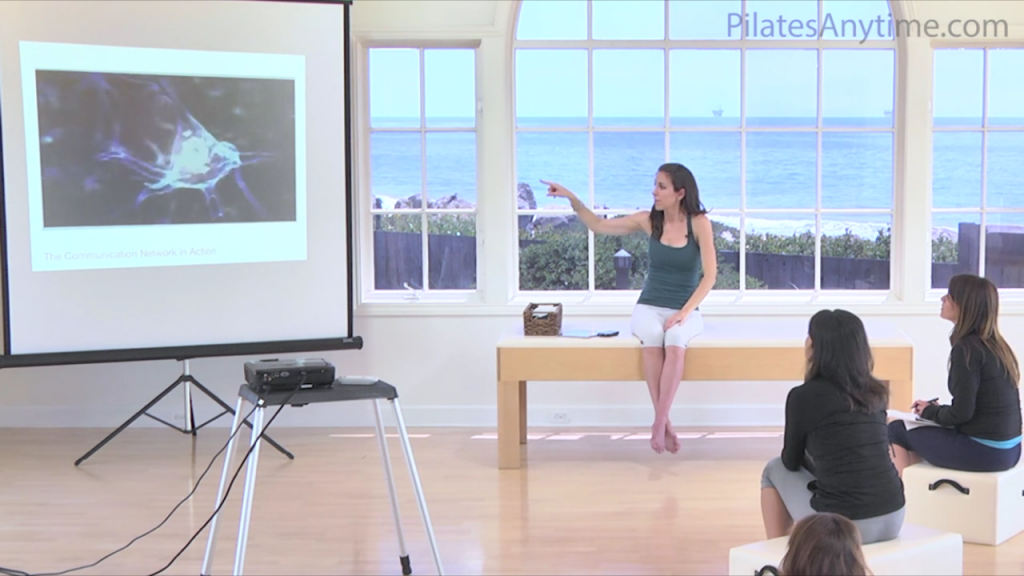How Pilates Changed My Life…And My MS, Part Two: Mariska Breland Practices What She Teaches
Written by |


Like so many people with MS, Mariska Breland remembers the disease’s onset as a combination of strange, seemingly disparate maladies that included tingling in her left thigh, numb feet, skin that felt “too thick” around her toes, foot drop, and double vision. One left her speechless.
“I was at work and all of a sudden I couldn’t speak,” she recalls. “It was really short, two minutes or something like that, but I realized I was unable to form words properly.”

(Courtesy of Mariska Breland)
It was 2002, and Breland, then 27, was ultimately diagnosed with relapse remitting multiple sclerosis. The diagnosis and symptoms shook her.
“That was a major hit for me,” she says.
Fitness and exercise had long been an integral part of her life.
“I was always somebody who liked working out,” she says. “I wasn’t a super-athletic person but I liked doing movement activities. And I was really into playing tennis. It was the sport I played in high school, never played in college, but it was my sport and the one that I really, really loved.”
The blow, she says, left her down — but not out.
“If anyone had to describe me in one word it would be ‘determined.’”
Determined to maintain as much of her fitness and lifestyle regime as possible, Breland asked her doctors for recommendations. Some told her not to bother.
“At that time some people were actually anti-exercise,” she says. Others suggested she try yoga or Pilates.
Breland was one step ahead of the recommendation; prior to her diagnosis she had become “obsessed” with yoga and experimented with Pilates. The experiment did not go well.
“I ended up getting a Pilates DVD and I hated it,” she says with a laugh. “It was awful.”

Mariska Breland doing a foot inversion exercise with a foam roller. (Courtesy of Mariska Breland)
But Breland says she discovered yoga, and Pilates helped reduce the numbness and tingling she felt. Gradually, Breland transitioned from yoga to Pilates and earned accreditation as a Pilates Method Alliance (PMA) Certified Pilates Teacher and Continuing Education Provider. She taught her first Pilates class in 2003 — one year after her MS diagnosis.
In 2010, she opened Fuse Pilates in Washington, D.C. As part of Breland’s comprehensive Pilates certification, she completed a year-long research project on Pilates for MS patients, which she expanded into an in-depth multi-day Pilates for MS advanced teacher training. She has now led 44 classes (my original Pilates instructor, Tobie Hall, was part of Breland’s second class).
Breland calls Pilates “special” in comparison to other types of fitness modalities for three specific reasons. First, she says, Pilates focuses on strength, flexibility, and balance in almost every exercise, benefitting nearly everyone with neurologic conditions. Flexibility work takes joints through the range of dynamic motion movement, but does so in a way that won’t aggravate spasticity. Work on the Reformer, a machine frequently used in Pilates exercises, works the vestibular system, which improves balance.
Second, Breland says, is that the core work done in Pilates can decrease the risk of falling. After developing liver complications, Breland underwent two abdominal surgeries, erasing the core strengthening work she’d been doing for years.
“I went from having really great abdominal strength to having none,” she says. “I remember tripping, I was walking with my husband, and I couldn’t get my feet under me. And I could see for myself that if you don’t have a really strong core, you would have terrible balance.”

Mariska Breland instructs a student with a Magic Circle. (Courtesy of Mariska Breland)
The third reason Pilates is meaningful to the MS population, Breland says, is that it is so easily modified to accommodate changing levels of ability associated with the disease’s progression.
“You take away the limitation so they can succeed at something, rather than looking at someone and saying, ‘We can’t do this because you have this weakness here.’”
Pilates, Breland says, isn’t a panacea. But it always helps.
“When you feel like your leg is not working, as an example, I know if I could get on a Reformer or hook a spring to my leg, or something like that, even if it’s a small amount of movement, it just sort of reconnects your brain and your body in the conversation,” she says.

Mariska Breland with MS trainers. (Courtesy of Mariska Breland)
“I do have some days where I don’t feel like I have MS because I don’t feel like it’s limiting my movement, sort of like the same feeling you got from your workout back in the day,” she says. “You’re so focused on what you’re doing and you sort of feel normal. And any chance you get where you feel a little bit normal is nice.”
Don’t miss the final installment of this series, which will focus on low-cost Pilates and resistance exercise you can do at home! You can read about how Pilates changed my life in the first installment.
***
Note: Multiple Sclerosis News Today is strictly a news and information website about the disease. It does not provide medical advice, diagnosis, or treatment. This content is not intended to be a substitute for professional medical advice, diagnosis, or treatment. Always seek the advice of your physician or other qualified health provider with any questions you may have regarding a medical condition. Never disregard professional medical advice or delay in seeking it because of something you have read on this website. The opinions expressed in this column are not those of Multiple Sclerosis News Today, or its parent company, Bionews Services, and are intended to spark discussion about issues pertaining to multiple sclerosis.






Giuseppina Mariano
Hello
Thank you for your posts I enjoy reading and learning about new exercises that can help me with my condition. I was diagnosed 2yrs ago with myelitis and was completely paralyzed from chest down. Today I walk with a cane and keep improving. I've always wanted to do table pilates and after seeing an exercise you illustrate for hyperextension of knee, I want to try this exercise and many more that will help me in my recovery. I live in the Dominican Republic and travel often to Miami and Montreal. Can you recommend a pilates teacher in Miami that can help me?
Wishing you all the best Mariska Breland.
Regards,
Giuseppina Mariano